![]()
![]()
![]()
Use LEFT and RIGHT arrow keys to navigate between flashcards;
Use UP and DOWN arrow keys to flip the card;
H to show hint;
A reads text to speech;
530 Cards in this Set
- Front
- Back
- 3rd side (hint)
|
RAMESES I |

The beginner of the great hypostyle hall at karnak and the founder of the 19th dynasty. |
|
|

MARBLE |
The mineral of greatest importance to Greek architecture of which Greece and her domains had ample supply of was. |
|
|
|
COLUMNAR TRABEATED |
Greek architecture was essentially. |

|
|
|
PROPYLAEA |

Forming the imposing entrance to the acropolis and erected by the architect Mnesicles is the. |
|
|

PARTHENON |
The building in the acropolis generally considered as being the most nearly perfect building ever erected is the. |
|
|

ARCH AND VAULT |
With the use of concrete made possible by pozzolan, a native natural cement, the Romans achieved huge interiors with the __________. |
|
|

COMPOSITE |
Which of the order was added by the Romans to the orders used by the Greeks. |
|
|
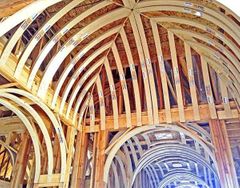
DOMICAL ROOF CONSTRUCTION |
From the 5th century to the present, the character of Byzantine architecture is the practice of using. |
|
|

MARBLE |
Romanesque architecture in Italy is distinguished from that of the rest of Europe by the use of what material for facing walls. |
|
|

PANTHEON |
The most famous and perfect preservation of all ancient buildings in Rome. |
|
|
|
PTEROMA |
The space between the colonnade and the naos wall in Greek temple. |

|
|
|
GLADIATORIAL CONTESTS |

Amphitheaters are used for ___. |
|
|

STOA |
An ancient Greek Portico, a long colonnaded shelter used in public places. |
|
|
|
ACROPOLIS |
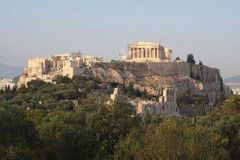
The fortified high area or citadel of an ancient Greek City. |
|
|
|
ANTEFIX |

An upright ornament at the eaves of a tile roof, concealing the foot of a row of convex tiles that cover the joints of the flat tiles. |
|
|
|
ACROTERION |

Strictly, a pedestal at the corners or peak of a roof to support an ornament, more usually, the ornament itself. |
|
|
|
ANTHEMION |

Also called a 'Honeysuckle' ornament. |
|
|
|
APOTHECA |
In ancient Greece and Rome, a store room of any kind, but especially for storing wine. |

|
|
|
ANTHEMION |

The characteristic of Greek ornament. |
|
|

REFECTORY |
The dining hall in a monastery, a convent, or a college. |
|
|
|
BAROQUE |
The architecture of the curved line is known as ___. |

|
|

CORTILE |
The open court in an Italian palazzo. |
|
|
|
TRACERY |
The ornamental pattern work in stone, filling the upper part of a Gothic window. |

|
|
|
ROMAN |

"cubicula" or bedroom is from what architecture. |
|
|
|
176 |

How many stained glass are there in the Chartres Cathedral? |
|
|
|
CORNICE, FRIEZE, ARCHITRAVE |
Parts of an entablature, in order of top to bottom. |

|
|
|
OCTAGONAL |
Plan shape of a Chinese pagoda. |

|
|
|
13 |
Usual number of stories for a Chinese pagoda. |

|
|
|
SQUARE |
Plan shape of a Japanese pagoda. |

|
|
|
PEDIMENT |

Triangular piece of wall above the entablature. |
|
|
|
PENDENTIVE |
A spherical triangle forming the transition from the circular plan of a dome to the poly-gonal plan of its supporting structure. |

|
|

NARTHEX |
A long arcaded entrance porch in an early Christian church. |
|
|

NAVE |
The principal or central part of a church, extending from the narthex to the choir or chancel and usually flanked by aisles. |
|
|
|
STYLOBATE |
The uppermost step in the crepidoma. |

|
|
|
STEREOBATE |
The lowest step in the crepidoma. |
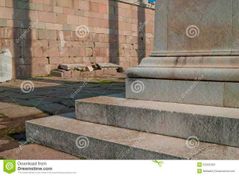
|
|
|
EUSTYLE |
Intercolumniation of 2.25 diameters. |
|
|
|
AREOSTYLE |
Intercolumniation of 4 diameters. |
|
|
|
SYSTYLE |
Intercolumniation of 2 diameters. |
|
|
|
PYCNOSTYLE |
Intercolumniation of 1.5 diameters. |
|
|
|
DIASTYLE |
Intercolumniation of 3 diameters. |
|
|

CIRCUS |
Roman building which is like the hippodrome of the Greek. |
|
|

COLOSSEUM |
Roman building for which gladiatorial battles took place. |
|
|

PALAESTRA |
a wrestling school or gymnasium. |
|
|

STADION |
A foot race course in the cities. |
|
|
|
CALLICRATES & ICTINUS |
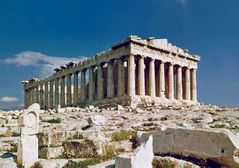
Architects of the Parthenon. |
|
|
|
LAMIN |

The tower atop the torogan where the princess and her ladies in waiting hide during occasions. |
|
|
|
ZAGUAN |

Found in the ground floor of the bahay na bato, it is where the carriages and floats are kept. |
|
|
|
BILIK |
The emergency hideout found directly behind the head board of the Sultan's bed. |
|
|
|
DAPOGAN |

In the kitchen of the bahay kubo, the table on top of which is the river stone, shoe-shaped stove or kalan is known as ___. |
|
|
|
CHA-SIT-SU |

Japanese tea house. |
|
|

MASJID |
A Muslim temple, a mosque for public worship, also known as place for Prostration. |
|
|
|
STUPA |

Domical mound containing a relic. |
|
|
|
BALE |

Ifugao house (southern strain). |
|
|

DORIC |
The style of the order with massive and tapering columns resting on a base of 3 steps. |
|
|

TUMULI |
Earthen burial mounds containing upright and lintel stones forming chambers for consecutive burials for several to a hundred persons. |
|
|

APSE |
A semi-circular or semi-polygonal space, usually in church,terminating in axis and intended to house an altar. |
|
|
|
DIPTERAL |

Temples in Greece that have a double line of columns surrounding the naos. |
|
|
|
PRYTANEION |

Senate house for chief dignitaries in Greek architecture. |
|
|
|
ERICH MENDELSOHN |
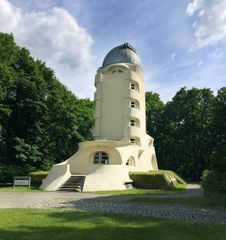
Architect of the Einstein Tower. |
|
|
|
WALTER GROPIUS |

Founder of the Bauhaus School of Art. |
|
|
|
ART NOUVEAU |

What architectural term is termed to be free from any historical style? |
|
|
|
WILLIAM VAN ALEN |

The architect of Chrysler building in N.Y. |
|
|
|
EMBRASURES |

Another term for crenel or intervals between merlon of a battlement. |
|
|

AMENEMHAT I |
In the middle kingdom, in Egyptian architecture, who consolidate the administrative system, made a survey of the country, set boundaries to the provinces, and other helpful works. |
|
|
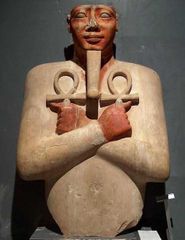
SENUSRET I |
Who erected the earliest known obelisk at Heliopolis. |
|
|
|
PYRAMID OF ZOSER |

The world's first large-scale monument in stone. |
|
|
|
PYRAMID OF KHUFU |

The highest sloped pyramid in Gizeh. |
|
|

CANEPHORAE |
Female statues with baskets serving as columns. |
|
|

BARTIZAN |
A small tower usually corbelled at the corner of the castle. |
|
|
|
MASU-GUMI |

A compound bracket or capital in Japanese architecture. |
|
|
|
CAVETTO |

A concave molding approximately quarter round. |
|
|
|
CARLOS SANTOS VIOLA |

Architect of Iglesia ni Cristo. |
|
|
|
CAESAR HOMER CONCIO |
A Filipino architect whose philosophy is 'the structure must be well oriented'. |
|
|
|
WILLIAM COSCOLLUELA |

Architect of Robinson's Galleria. |
|
|
|
IMHOTEP |

King Zoser's architect who was deified in the 26th dynasty. |
|
|
|
RICHARD JOSEF NEUTRA |
A house is like a flower pot. |
|
|
|
JUGENDSTIJL |

Art Noveau is known as the international style, in Germany it is known as ___. |
|
|
|
EERO SAARINEN |

Architect of TWA airport. |
|
|
|
KENZO TANGE |
Modern architecture need not be western. |
|
|

KHUFU |
Not among the three pyramids in Giza. |
|
|
|
CONSOLE |

A decorative bracket usually taking the form of a cyma reversa strap. |
|
|

CHARTRES CATHEDRAL |
Finest example of French-Gothic architecture. |
|
|
|
TOKONOMA |

A special feature of Japanese houses, used to display a flower arrangement or art. |
|
|
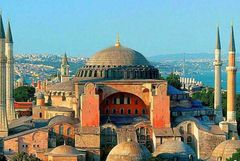
HAGIA SOPHIA |
The most famous structure of Byzantine architecture and notable of its large dome. |
|
|

BALDACCHINO |
An ornamental canopy of stone or marble permanently place over the altar in a church. |
|
|

TABERNACLE |
A decorative niche often topped with a canopy and housing a statue. |
|
|
|
EXEDRA |

A large apsidal extension of the interior volume of a church. |
|
|
|
NICHE |

A recess in a wall to contain a statue or other small items. |
|
|
|
PINACOTHECA |

A Greek building that contains painted pictures. |
|
|
|
ODEION |
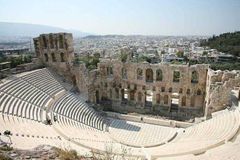
A kindred type to the theater. |
|
|
|
EPIDAUROS |

The most beautiful and best preserved of the Greek theaters. |
|
|
|
OPUS MIXTUM |

A type of Roman wall facing with alternating courses of brickworks. |
|
|
|
OPUS INCERTUM |

A type of Roman wall facing which is made of small stone laid in a loose pattern roughly resembling polygonal work. |
|
|
|
OPUS RECTICULATUM |

A type of Roman wall facing with a net-like effect. |
|
|
|
OPUS QUADRATUM |

A type of roman wall facing with rectangular block with or without mortar joints. |
|
|
|
OPUS TESSELATUM |

Marble mosaic pattern used on ceilings of vaults and domes. |
|
|
|
LOUIS SULLIVAN |
Form follows function. |
|
|
|
ANGKOR WAT |

What is the largest temple in the world? |
|
|
|
MACHU PICCHU |

The best preserved Incan city structure. |
|
|
|
MINARETS |

What is the most striking feature of Muslim Architecture? |
|
|
|
SAHN |

What is a courtyard in Islamic architecture? (It is a common element in traditional mosques, religious buildings and residences throughout the Arab world.) |
|
|
|
DIKKA |

In Islamic Architecture, it is a tribune raised upon columns from which the Koran is recited and prayers are in toned by the Imam. |
|
|
|
MAQSURA |

In Islamic architecture, it is the sanctuary or praying chamber in a mosque. Sometimes enclosed with a screen of lattice work. |
|
|
|
MOSQUE |
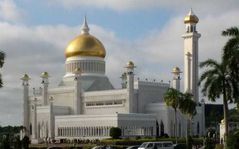
It is where Muslims pray. |
|
|
|
SARACENIC ARCHITECTURE |

From what style did Muslim architects pattern their structures? |
|
|

SAGRADA FAMILIA |
Art Noveau inspired structure by Antonio Gaudi that remains to be unfinished. Located in Spain. |
|
|
|
LUDWIG MIES VAN DER ROHE |

Who is the architect of the Farnsworth house? |
|
|
|
MODERN INTERNATIONAL |

What architectural style did the architect of the Farnsworth house apply in desiging the residence? |
|
|
|
MUDEJAR |
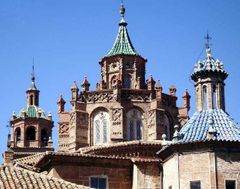
A term given to the mixture of Christian, Spanish, and Muslim 12th-16th century architecture. |
|
|
|
MNESICLES |

Architect of the famous Propylaea, Acropolis. |
|
|
|
DOSSERET BLOCK |
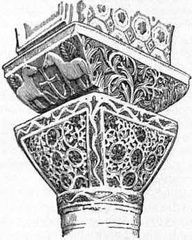
Thick abacus of byzantine capital. |
|
|
|
TORANA |

Buddhist gateway. |
|
|
|
GOPURAM |

Indian/hindu gateway. |
|
|
|
OTTO WAGNER |

Who is the architect of the Austrian Postal Savings building? |
|
|
|
SANTIAGO CALATRAVA |

Who designed the Auditorio de Tenerife? Or presently known as Adan Martin. |
|
|
|
CAPIZ SHELLS |
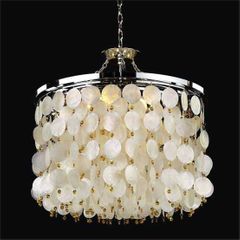
Raw natural material that traditional Filipino Architecture used as motifs in the design of their home? |
|
|
|
KATIG |

What is used to balance the Tawi-Tawi boat when it is on water? |
|
|
|
LORENZO GHIBERTI |

Who won the design competition for the set of bronze doors of the Baptisery of the Cathedral in Florence? |
|
|

LE CORBUSIER |
Who is Charles-Edouard Jeanneret-Gris? |
|
|
|
PARMENISKOS |

Who was the architect of the Serapeum of Alexandria? (It was under the reign of Ptolemy III that is was built) |
|
|
|
SOSTRATUS |
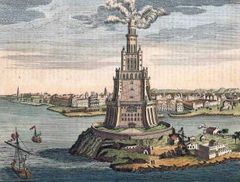
Who was the architect of the Lighthouse/Pharos of Alexandria? |
|
|
|
FRANK LLOYD WRIGTH |

Who was the architect of the Robie House? |
|
|
|
TEOFILO VASQUEZ |

Architect of the UAP National Headquarters |
|
|
|
YOLANDA REYES |
First woman national architect to be elected president of the UAP. |
|
|
|
JOSE MARIA ZARAGOSA |

Architect of Meralco Building. |
|
|
|
FELIPE MENDOZA |

Founder of Batasang Pambansa. |
|
|
|
LEANDRO LOCSIN |

Architect of Folk Arts Theatre. |
|
|
|
JUAN ARELLANO |

Architect of Manila Central Post Office. |
|
|
|
JUAN ARELLANO |

Architect of Legislative Building (National Museum). |
|
|
|
JUAN ARELLANO |

Architect of the Metropolitan Theatre. |
|
|
|
JUAN NAKPIL |

Architect responsible for the addition of the dome and second belfry of the Quiapo Church. |
|
|
|
JOSE ZARAGOZA |
Philipine National artist declared on 2014? |

|
|
|
CARLOS ARGUELLES |

Who designed the Philam life Building located at United Nations Avenue in Manila? |
|
|
|
POPULOUS |

Architect of the Philippine Arena? |
|
|
|
VIGAN |

Considered as the Intramuros of the North. |
|
|
|
ROBERT VENTURI |

Architect of the Seattle Museum, 1991 |
|
|
|
ZAHA HADID |
Pritzker Prize Awardee of 2004. |
|
|
|
ART DECO |

The Chrysler building is a classic example of what architectural style? |
|
|
|
CESAR PELLI |

Architect of the Petronas Tower. |
|
|
|
I.M. PEI |

The architect of "Essensa", one of the premier high rise residential condominiums in Bonifacio Global City. |
|
|
|
I.M. PEI |

Architect of the Louvre pyramid. |
|
|
|
I.M. PEI |

Architect of the Bank of China. |
|
|
|
I.M. PIE |

Architect of the Rock n' Roll Hall of Fame. |
|
|
|
TEXAS COMMERCE TOWER |

The JP Morgan Chase tower is originally known as __________? |
|
|
|
I.M. PIE |

Architect of Texas Commerce Tower. |
|
|
|
RYUGYONG HOTEL |

Voted the "Worst Building in the History of Mankind". Found in north Korea. It is also known as 105 building. |
|
|
|
WOOLWORTH BUILDING |

Dubbed the "Cathedral of Commerce" due to the many medieval style ornaments that embellish the building. |
|
|
|
CASS GILBERT |

Who was the architect of the Cathedral of Commerce? |
|
|
|
RAYMOND HOOD |
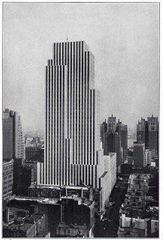
Who is the architect of the Daily News Building located in Manhattan, New York? (It became a National Historic Landmark in 1988). |
|
|
|
WILLIAM LAMB |

Architect of the Empire State Building. |
|
|
|
MINORU YAMASAKI |

Who designed the World Trade Center in New York? |
|
|
|
RENZO PIANO |

Architect of the New York Times Building. |
|
|
|
RENZO PIANO |

The architect of the Shard in London. |
|
|
|
LE CORBUSIER |

Architect of the Carpenter Center. |
|
|
|
SUN SHADE |

What is the function of the brise soleil? |
|
|
|
RENZO PIANO |

Architect of the Tjibao Cultural Center. |
|
|
|
LEANDRO LOCSIN |
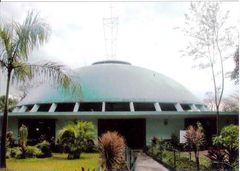
Architect of the Chapel of the Holy Sacrifice. |
|
|
|
FRANK GEHRY |

Architect of the Guggenheim Museum at Bilbao. |
|
|
|
BENJAMIN MORRIS |

Architect of the Bank of New York. |
|
|
|
PHILIP JOHNSON |

Architect of the Sony Center. |
|
|
|
PHILIP JOHNSON |
1979 Pritzker Awardee. |
|
|
|
EERO SAARINEN |

Architect of Dulles Airport. |
|
|
|
LE CORBUSIER |
Who said "The house is a machine to live in"? |
|
|
|
LUDWIG MIES VAN DER ROHE |
Who said "God is in the details"? |
|
|
|
KENZO TANGE |
Who said "Modern Architecture need not be western"? |
|
|
|
TITANIUM |

What material was used in the facade of the Gughenheim Museum in Bilbao? |
|
|
|
AUGUSTE PERRET |

Who pioneered "Beton Brut"? |
|
|
|
LE CORBUSIER |

Who popularized "Beton Brut"? |
|
|
|
BETON BRUT |

Architectural concrete left unfinished or roughly finished after pouring and intentionally left exposed visually. |
|
|
|
WHITE BOX ARCHITECTURE |
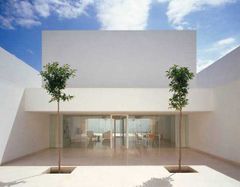
In the 1920's, Le Corbusier was known for promoting this Architectural Style. |
|
|
|
BRUTALISM |

Architectural style characterized by bold forms, harsh proportions, and rough materials such as exposed concrete, steel and wood. |
|
|
|
LE CORBUSIER |
Who formulated a set of architectural principles known as The Five Points of Architecture? |
|
|
|
LE CORBUSIER |
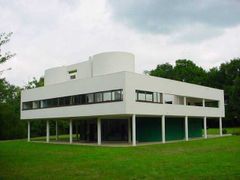
Architect of Villa Savoye. |
|
|
|
NORMAN FOSTER |

Architect of the Chek Lap Kok Airport where natural light, tensioned membrane and anthropometrically correct dimensions were emphasized. |
|
|
|
JORN UTZON |

Architect of the Sydney Opera House. |
|
|
|
CASA MILA |

The last civil work of Antonio Gaudi. Popularly known as La Pedrera meaning the Quarry. Declared a UNESCO heritage site in 1984 |
|
|
|
CASA BATLLO |

Work of Antonio Gaudi that has an undulating facade decorated with a colorful mosaic of broken ceramic tiles, the roof is arched and has a unique chimney. |
|
|
|
EUGENE FRESSINNET |
Known for Prestressed Concrete. |
|
|
|
BAROQUE |

Introduced thin shell construction using reinforced concrete. |
|
|
|
NORMAN FOSTER |

Architect of Shanghai Bank, Hong Kong. |
|
|
|
ULM MINSTER |

World's tallest church. |
|
|
|
OLD NEW SYNAGOGUE |
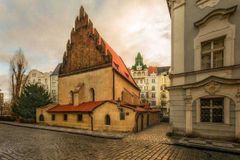
World's oldest "active" synagogue. |
|
|
|
BAROQUE |

The architectural style used for the Paoay Church. |
|
|
|
HIEROGLYPHICS |

Characteristic wall ornament of the egyptians. |
|
|

PYRAMID |
Structure whose sides were made to face the four cardinal points. |
|
|

ZIGGURAT |
Structure whose corners were made to face the four cardinal points. |
|
|
|
HYPOSTYLE HALL |
In egyptian temples, a pillared hall in which the roof rests on columns. |

|
|

DORIC |
The Greek order that do not have a base. |
|
|
|
4-6.5D |
Proportion of a Greek Doric column |
|
|
|
9D |
Proportion of a Greek Ionic column. |
|
|
|
10D |
Proportion of a Greek Corinthian column. |
|
|
|
HYPOTRACHELION |
The shaft of the Greek Doric order terminates where? |

|
|
|
1/4 |
Entablature height of the Doric order based on the height of order. |
|
|
|
1/2 |
Entablature height of the Ionic order based on the height of order. |
|
|
|
1/5 |
Entablature height of the Corinthian order based on the height of order. |
|
|
|
PERIBOLUS |

The wall or colonnade enclosing the temenos. |
|
|
|
PHEIDIAS |

The master sculptor of the Parthenon. |
|
|
|
MNESICLES |

The architect of the Erectheion. |
|
|
|
CALLICRATES |

The architect of the Temple of Nike Apteros, Athens. |
|
|
|
THERON |

Designer of Temple of Zeus, Agrigentum. |
|
|
|
DEINOCRATES |

The designer of The temple of Artemis, Ephesus. Also called the Hellinistic temple. |
|
|
|
SCOPAS |

The master sculptor of The temple of Artemis, Ephesus. Also called the Hellinistic temple. |
|
|
|
CARYATID PORCH |

The Erectheion, Athens which stands on the north of the Parthenon has an unusual feature which is the? |
|
|
|
3 NAOS & ATLANTES FIGURES |

The temple of Zeus, Agrigentum, second largest Greek temple has an unusual feature. What is it? |
|
|
|
DIAZOMA |
The tier of seats in the Greek theatre are separated by? |

|
|
|
TRACHELION |
The continuation of the fluted shaft in the Greek Doric column. |

|
|
|
POLYCLEITOS |

The designer of the Theatre of Epidauros, the most beautiful and best preserved Greek theatre. |
|
|
|
SATYROS & PYTHIAS |

Designers of The Mausoleum, Helicarnassus. Most famous of all tombs. |
|
|
|
CLEPSYDRA |
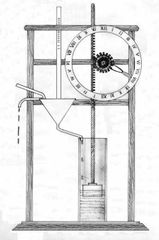
A Greek water clock or instrument for measuring the discharge of water through a small opening. |
|
|
|
TYMPANUM |

The triangular surface bounded by the sloping and horizontal cornices of a pediment. |
|
|
|
CYRTOSTYLE |

A circular projecting portico. |
|
|
|
ANCONES |

Consoles on either side of a doorway supporting a cornice. |
|
|
|
ACROTERIA |

Blocks resting on the vertex and lower extremities of the pediment to support a tatuary or ornament. |
|
|

TUSCAN |
The Etruscans invented what column? |
|
|
|
OPUS TESTACEUM |

The wall facing developed by the Romans which is made of brick facing with stones cut in triangular form. |
|
|
|
OPUS SPICATUM |

Marble mosaic pattern used on the floor. |
|
|
|
SPUR |
The buttress which catches the thrusts of the main vaults where they are concentrated in the pockets above columned pillars. |

|
|

PINNACLE |
The buttress which were placed on the top of the spur buttress to help by their weight to drive the oblique thrusts more steeply down to earth is called. |
|
|
|
SUDATORIUM |

Dry sweating room in the thermae. |
|
|
|
APODYTERIA |

The dressing room in the thermae. |
|
|
|
UNCTUARIA |

Room containing the ungents and oils in the thermae. |
|
|
|
COLUMBARIA |

Niches, similar to pigeon-holes formed in the rock where ashes of the dead, placed in an urn, were deposited. |
|
|
|
LOCULI |

Recesses for the corpses sealed with a front slab inscribed with the name of the dead. |
|
|
|
DOMUS |

Private house of the Romans. |
|
|
|
INSULA |

A multi-story tenement housing for workers. |
|
|

AQUEDUCT |
The arched waterways erected to supply most parts of Rome with water. |
|
|
|
LOCUS |

A Roman fountain designed with sprouting jets. |
|
|
|
WAGGON-HEADED VAULT |

The vault that is carried throughout its length on the two parallel walls of a rectangular apartment. |
|
|
|
ACANTHUS SCROLL |
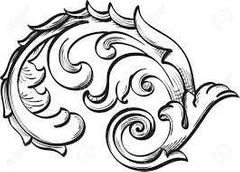
The special characteristic of the Roman ornament. |
|
|
|
FORUM MAXIMUS |

The oldest and most important example of a Roman forum. |
|
|

PREHISTORIC |
Existing in the time prior to the recording of human events. |
|
|

NEOLITHIC |
Last phase of the Stone Age, characterization by the cultivation of grain crops, domestication of animals. From 'Neo' + 'Lithos' |
|
|

PALEOLITHIC |
Means Old stone, first part of prehistoric age. |
|
|
|
MEGALITHIC |

Type of construction that uses large stones. |
|
|

CARDINAL POINTS |
Orientation of prehistoric architectures faces ________. |
|
|
|
MENHIR |

A single, large upright monolith, sometimes in parallel rows reaching several miles. |
|
|
|
DOLMEN |

Tomb of standing stone usually capped with a large horizontal slab. |
|
|
|
CROMLECH |

Enclosure formed by huge stones planted on the ground in circular forms. |
|
|

TUMULUS |
Dominant tomb type in the prehistoric age, characterized by corbelled stone covered by earth. |
|
|

HOUSE |
A building in which people live. |
|
|

SHELTER |
Something beneath, behind or within which a person is protected from storms or other adverse conditions. |
|
|

HUT |
A small, simple dwelling or shelter, esp. one made of natural materials. |
|
|

PIT DWELLING |
A primitive form of shelter consisting of a pit excavated in the earth and roofed over. |
|
|
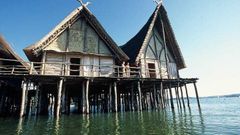
LAKE DWELLING |
A dwelling, esp. of prehistoric times, built on piles or other supports over the water of a lake. |
|
|

LONGHOUSE |
A communal dwelling characteristic of many early cultures, esp. that of the Iroquois and various other North American India peoples, consisting of a wooden, bark-covered framework often as much as 30.5 m in length. |
|
|

IGLOO |
An Eskimo house, usually built of blocks of hard snow or ice in the shape of a dome, or when permanent, of sod, wood or stone. |
|
|
|
PUEBLO |

A communal dwelling and defensive structure of the Pueblo Indians of the southwestern US, built of adobe or stone, typically many-stories and terraced, with entry through the flat roofs of the chambers by ladder. |
|
|
|
MESA |

A natural flat-topped elevation with one or more clifflike sides, common in arid and semiarid parts of the southwestern United States and Mexico. |
|
|
|
KIVA |

A large underground or partly underground chamber in a Pueblo Indian village, used by the men for religious ceremonies or councils. |
|
|
|
YURT |

A circular, tentlike dwelling of the mongol nomads of central Asia, consisting of a cylindrical wall of poles in a lattice arrangement with a conical roof of poles, both covered by felt or animal skins. |
|
|
|
TEPEE |

A tent of the American Indians, made usually from animal skins laid on a conical frame of long poles and having an opening at the top for ventilation and a flap door. |
|
|
|
WIGWAM |
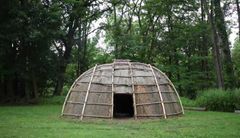
An American Indian dwelling, usually of round or oval shape, formed of poles overlaid with bark, rush mats or animal skins. |
|
|
|
WETU |

A temporary domed hut of red cedar and grass, used by northeastern North American tribes. |
|
|
|
HOGAN |

A Navaho Indian dwelling constructed usually of earth and logs and covered with mad and sod. |
|
|
|
SOD HOUSE |
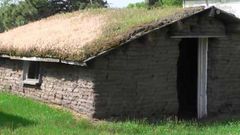
A house built of strips of sod, laid like brickwork, and used esp. by settlers on the Great Plains when timber was scarce. |
|
|

TOTEM POLE |
A pole or post carved and painted with totemic figures, erected by Indians of the northwest coast of North America, esp, in front of their houses. |
|
|

TOTEM |
An animal, plant, or natural object serving as an emblem of a family or clan by virtue of an ancestral relationship. |
|
|
|
PLANK HOUSE |

A large, usually rectangular house constructed of timber planks, built and used by Indians and less frequently by Eskimos. |
|
|
|
TRULLO |

A circular stone shelter of the Apulia region of southern Italy, roofed with conical constructions of corbeled dry masonry, usually whitewashed and painted with figures or symbols. |
|
|

CATAL HUYUK |
A Neolithic settlement in Anatolia. One of the world's earliest cities. It had mud-brick fortifications and houses, frescoed shrines, a fully developed agriculture. |
|
|
|
BRONZE AGE |

A period of human history that followed the Stone Age, characterized by the use of bronze implements. |
|
|
|
HARAPPA |

Bronze Age culture that flourishes in the Indus Valley. |
|
|

MESOPOTAMIA |
An ancient region in western Asia between the Tigris and Euphrates rivers occupied successively by SBAPS. |
|
|
|
FERTILE CRESCENT |

An agricultural region arching from the eastern shores of the Mediterranean Sea in the west to Iraq in the east, the location of humankind's earliest cultures. |
|
|
|
YANG-SHAO |

A Neolithic culture in China centered around the fertile plains of the Yellow RIver characterized by pit dwellings and fine pottery painted in geometric designs. |
|
|
|
XIA |

A legendary dynasty in China. |
|
|
|
SHANG |

A Chinese dynasty that marked the introduction of writing, and a mastery of bronze casting. |
|
|

CHINESE ARCHITECTURE |
The indigenous architecture of a vast country in eastern Asia whose civilization has continually evolved and survived longer than any other nation in the world. |
|
|
|
ZHOU |

Chinese dynasty marked by the division of China into separate feudal states, and the emergence of Confucianism and Taoism, which gave thrust to all subsequent Chinese culture. |
|
|
|
CONFUCIANISM |
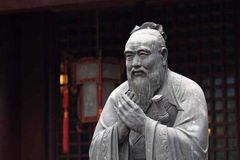
A philosophy that dominated China until the early 20th century, an ethical system based on the teachings of Confucius. Love for humanity, family and spirits of one's ancestors. |
|
|

YIN-YANG |
In Chinese philosophy and religion, the interaction of two opposing and complementary principles - one that is feminine, dark and negative (yin) and the other that is masculine, bright and positive (yang) - that influences the destinies of creatures and things. |
|
|
|
MINGTANG |

Bright hall: a ritual structure in Chinese architecture that serves as the symbolic center of imperial power. |
|
|
|
BIYONG |
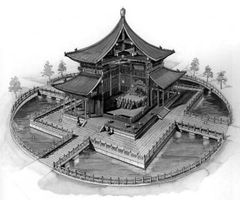
Jade ring moat: a ritual structure in Chinese architecture enclosing a space in the shape of a flat jade ceremonial disk. |
|
|
|
LINGTAI |

spirit altar: a raised astronomical observatory in Chinese architecture, usually the central, circular upper story of the mingtang. |
|
|
|
JIAN |
A standard unit of space in Chinese architecture marked by adjacent frame supports. The spatial unit serves as basis for the modular structure of a Chinese city. |

|
|

GREAT WALL OF CHINA |
A fortified wall commenced under the Zhou dynasty to protect China against nomads from the north and serve as a means of communication. |
|
|
|
1.500 MILES |

Total length of the Great Wall of China (in miles). |
|
|
|
TAOISM |

Chinese philosophy and religion based on the teaching of Lao-tzu, emphasizing the life of simplicity, and non interference with the course of natural events in order to attain a happy existence in harmony with the Tao. |
|
|
|
TAO |

The Way: in Chinese religion, the creative principle that order the universe. |
|
|
|
ZHOU DYNASTY |

Chinese dynasty that commenced the construction of the Great Wall. |
|
|
|
QIN |

Chinese dynasty marked by the emergence of a centralized government and the construction of much of the Great Wall. |
|
|

NILE RIVER |
Travel and trade route in Egypt. |
|
|

COLUMNAR & TRABEATED |
[Construction system] Egyptian Architecture. |
|
|
|
LOTUS, PAPYRUS & PALM CAPITALS |

Types of Egyptian capitals (3). |
|
|
|
9-24M |

Width of batter walls used in Egyptian Architecture. |
|
|
|
BATTER WALL |

Type of wall that diminishes in width towards the top. |
|
|

SCARAB |
In Egyptian decoration, this symbolized resurrection. |
|
|

AMON-RA |
Sun god of the Egyptians. |
|
|

GRAPES |
In Egyptian decoration, this symbolized eternity. |
|
|
|
MASTABA |

Rectangular, flat-topped funerary mound; with a battered side, covering a burial chamber below ground. |
|
|
|
SERDAB |
The offering table in a Mastaba is called ________. |

|
|
|
STELAE |

The inscription tablet in a Mastaba is called ___________. |
|
|
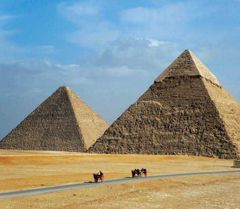
PYRAMIDS |
Massive funerary structure of stone or brick with square plan and four sloping triangular sides meeting at the apex. |
|
|
|
STEP, SLOPE, BEND |

Types of Egyptian pyramids (3). |
|
|
|
PYRAMID OF ZOSER |

Best example of Egyptian step pyramid. |
|
|
|
PYRAMIDS OF GIZA |
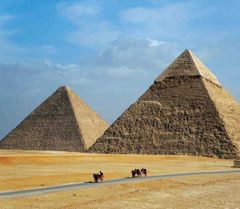
Finest true Egyptian Pyramids. |
|
|
|
PYRAMID OF KHUFU |

Largest pyramid in the Giza complex. |
|
|
|
PYRAMID AT SENEFERU |

Best example of Egyptian bent pyramid. |
|
|
|
ROCK-CUT/ ROCK-HEWN |

Egyptian tombs built for noblemen, but not royalty; to keep thieves away. |
|
|

PYLON |
[Egyptian] Monumental gateway to the temple consisting of slanting walls flanking the entrance portal. |
|
|

OBELISK |
Upright stone square in plan, with an electrum-capped pyramidion on top, symbolizing the sun god Heliopolis; comes in pairs. |
|
|
|
9-10D |

Egyptian obelisk height in proportion to its diameter? |
|
|
|
ELECTRUM |

Mixture of silver and gold; material capping the obelisks of Egypt. |
|
|

MORTUARY TEMPLES |
[Egypt] Temples made for the pharoahs. |
|
|

CULT TEMPLES |
[Egypt] Temples in honor of their gods. |
|
|

HYPAETHRAL COURT |
[Egypt] Part of the temple that is open to the sky. |
|
|

HYPOSTYLE HALL |
[Egypt] part of the temple on which the roof rests; portrays a marsh in the beginning of time; literally means "under columns". |
|
|
|
GREAT TEMPLE OF AMMON, KARNAK |

[Egypt] Greatest example of a temple (cult temple). |
|
|
|
MAMMISI TEMPLE |
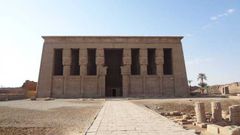
Is considered to be the prototype of Greek temples. |
|
|
|
GREAT TEMPLE OF ABU-SIMBEL |

An example of a rock-cut temple, with 4 collosal statues of Ramses. |
|
|
|
TEMPLE OF HATSHEPSUT |
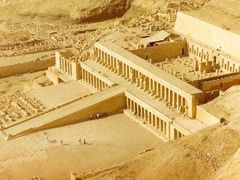
[Egypt] Temple with 3 tiers, seemingly carved out of the rock; built by Senenmut. |
|
|
|
SENENMUT |

Built the Temple of Hatshepsut. |
|
|

MESOPOTAMIA |
Near East architecture is generally architecture that started from which area? |
|
|
|
SBAPS (SUMER, BABYLONIAN, ASSYRIA, PERSIA, SASSANIAN) |
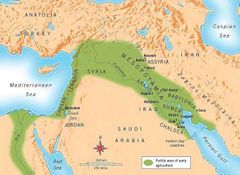
Civilizations that originated in Mesopotamia? |
|
|
|
SUMER |

Which civilization is one of the earliest cities with a fortified wall? |
|
|

MUD-BRICKS |
Material used by Sumerians in their buildings. |
|
|

ZIGGURATS |
Artificial mountains, tiered with rectangular stages and a temple at the summit. |
|
|
|
ARCUATED |

[Sumerian] Type of construction. |
|
|
|
ERIDU, URUK & UR |

The cities of Sumer? (3) |
|
|
|
BABYLONIANS |

Civilization that conceptualized the number "0". |
|
|
|
HAMMURABI CODE |
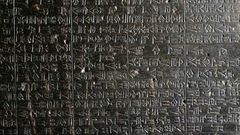
Law used as basis for the planned city of Babylon. |
|
|
|
GATE OF ISHTAR |
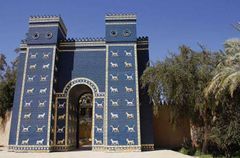
In Babylonian architecture, the gates that were dedicated to the gods. |
|
|
|
ASSYRIAN |

In Mesopotamian culture, which civilization uses winged bulls, glazed bricks and murals? |
|
|
|
SEVEN STAGES |
How many stages do the Assyrian Ziggurats have? |

|
|
|
SERAGUO |

The palace proper of an Assyrian Palace? |
|
|
|
PALACE OF SARGON |

Notable Assyrian palace? |
|
|
|
HARAM |

Private chambers in an Assyrian palace. |
|
|
|
KHAN |

Service chambers in an Assyrian palace. |
|
|
|
PERSIAN |
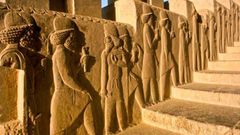
Mesopotamian civilization that first introduced the use of column. |
|
|
|
MEGARON |

An Anatolian house that has its entrance at the end. |
|
|
|
PERSEPOLIS |

Literally means "City of Persia"; this is where you will most likely find bull-capped columns. |
|
|
|
HUNDRED COLUMN HALL |

Famous term for the Hypostyle hall of Xerxes. |
|
|
|
APADANA |

A large hypostyle hall in Persian architecture; especially in Persepolis. |
|
|
|
BUCKMINSTER FULLER |

"He created the Dymaxion House, ""the first machine forliving"" |
|
|
|
MARCEL LAJOS BREUER |

Architect of the Bi-Nuclear House, the H-Plan. |
|
|
|
FELIX OUTERINO CANDELA |

"Mexican Architect/Engineer who introduced thin shell construction." |
|
|
|
AGRIPPA |

The architect of the Pantheon. |
|
|
|
BERNINI |

He erected the entrance Piazza at St. Peter's Basilica. |
|
|
|
ANTHEMIUS & ISIDORUS |

"Architects of the Hagia Sophia. (St. Sophia,Constantinople)" |
|
|
|
GEORGE RAMOS |

Architect of the Lung Center of the Philippines. |
|
|
|
THOTHMES I |

Who began the building of the Great Hypostyle Hall at Karnak? |
|
|
|
PTOLEMY III |

Architect of the Great Serapeum at Alexandria. |
|
|
|
INIGO JONES |

The dominating personality who became an ardent disciple of the Italian renaissance style. |
|
|
|
CALLIMACHUS |

Conceptualized the Corinthian capital. |
|
|
|
LIBON |

Architect of the Temples of Zeus, Olympia. |
|
|
|
COSSUTIUS |

Roman architect of the Greek Temples of Zeus,Olympius. |
|
|
|
PHIDIAS |
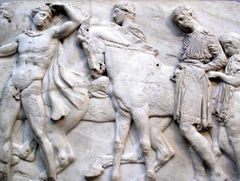
Master sculptor of the Parthenon. |
|
|
|
WELTON BECKET |

Architect of Manila Hilton Hotel. |
|
|
|
ELIEL SAARINEN |

Architect of the Chicago Tribune Tower. |
|
|
|
FRANK LLOYD WRIGTH |
Architecture is Organic. |
|
|
|
HENNEVIQUE |
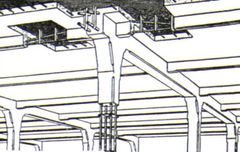
Invented reinforced concrete in France. |
|
|
|
JOSE HERRERA |
First elected U.A.P. president. |
|
|
|
JUAN NAKPIL |
First president and founder of PAS. |
|
|
|
FELIPE MENDOZA |

Architect of the National Library, Philippines. |
|
|
|
JUAN NAKPIL |

Designer of the Bonifacio Monument. |
|
|
|
GUILLERMO TOLENTINO |

Sculptor for the Bonifacio Monument. |
|
|
|
SHAH JAHAN |

Designer of the Taj Mahal. |
|
|
|
ERICH MENDELSOHN |

Expressionist Architect. |
|
|
|
JOHN RUSKIN & WILLIAM MORIS |

Founders of the "Art Nouveau". |
|
|
|
JUAN NAKPIL |

Architect of the Philippine Heart Center. |
|
|
|
JUAN NAKPIL |

Architect of the Rizal Memorial Stadium. |
|
|
|
JUAN NAKPIL |

The architect of the Quiapo Church before its restoration. |
|
|
|
ANTONIO SIN DIONG |

Architect of SM Megamall. |
|
|
|
GABRIEL FORMOSO |

Central Bank of the Philippines, Manila. |
|
|
|
GEORGE RAMOS |

G.S.I.S. Building, Roxas Boulevard. |
|
|
|
MORONG CHURCH |

Built by the Franciscan priest Fr. Blas dela Madre, this church in Rizal whose design depicts the heavy influence ofSpanish Baroque, was declared a national treasure. |
|
|
|
PANAY CATHEDRAL IN CAPIZ |
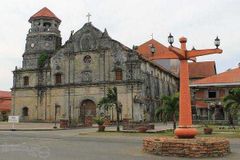
This church, 1st built by the Augustinian Fr. Miguel Murguia, has an unusually large bell which was made from approximately 70 sacks of coins donated by the towns people. |
|
|

BEMA |
A raised stage reserved for the clergy in early Christian churches. |
|
|

NAOS |
In Greek temples, the equivalent of the crypt is the ___. |
|
|
|
AMPHI-PROSTYLE |

From the Greek temples, a temple that have porticoes of columns at the front and rear. |
|
|

CELLA |
Corresponds to the Greek naos. |
|
|

GREEK CROSS |
The first plan shape of the St. Peter's Basilica by Bramante. |
|
|

LATIN CROSS |
The final plan shape of the St. Peter's Basilica by Carlo Maderna. |
|
|
|
AMBO |
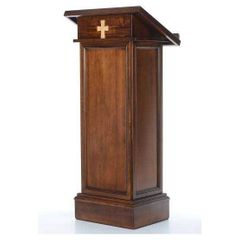
On either side of the choir, pulpits for the reading of the epistle and the gospel are. |
|
|
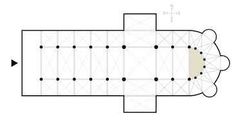
APSE |
In early Christian churches, the bishop took the centralplace at the end of the church called ___. |
|
|
|
FORUM |

Orientation of the Roman temple is towards the ___. |
|
|
|
EAST |

Orientation of the Greek temple is towards the ___. |
|
|
|
SOUTH |

Orientation of the Etruscan temple is towards the ___. |
|
|
|
WEST |

Orientation of the Medieval Church |
|
|
|
CANCELLI |

The space for the clergy and choir is separated by a lowscreen wall from the body of the church called ___. |
|
|
|
LITTLE METROPOLE CATHEDRAL, ATHENS |

Smallest cathedral in the world. (Byzantine period). |
|
|
|
NEA MONI |

One of the few churches of its type to have survived having a square nave and without cross-arms, roofed by a dome which spans to the outer walls of the building. |
|
|
|
CENTRALIZED |

Type of plan of the Byzantine churches. |
|
|

LICEO DE MANILA |
First school which offered architecture in the Philippines. |
|
|
|
WORMS CATHEDRAL |

The best example of a German Romanesque church withapses at both east and west ends. |
|
|
|
BOULEUTERION |

The council house in Greece. |
|
|
|
PRYTANEION |
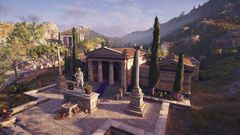
The senate house of the Greeks. |
|
|
|
CIRCUS MAXIMUS |
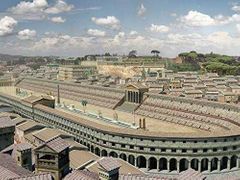
The oldest circus in Rome. |
|
|
|
FORUM ROMANUM |

The oldest and most important forum in Rome. |
|
|
|
TEPIDARIUM |
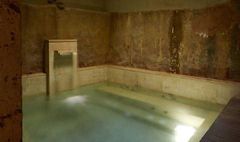
The warm room in the Thermae. |
|
|
|
CALIDARIUM |
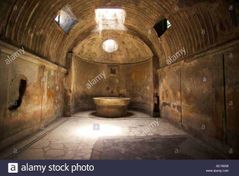
The Hot room of the Thermae. |
|
|
|
VESPASIAN / DOMITIAN |

The colosseum in Rome also known as the ""flavian amphitheater"" was commenced by whom and completed by whom? |
|
|
|
TREASURY OF ATREUS |

The finest of Greek Tombs, also known as the 'tomb ofAgamemnon'. |
|
|
|
XERXES |
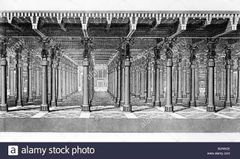
Who commenced the 'hall of hundred columns'? |
|
|
|
THALAMUS |

The sleeping room of the 'megaron'. |
|
|
|
VILLA |

Semi-palatial house surrounded by an open site. |
|
|

ATRIUM HOUSE |
A roman house with a central patio. |
|
|
|
BALNEUM |
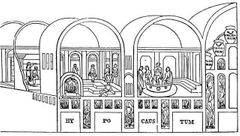
A small private bath found in Roman houses or palaces. |
|
|
|
MENHIR |

A megalithic structure consisting of several large stones set on end with a large covering slab. |
|
|

ROYAL PYRAMIDS |
A massive funerary structure of stone or brick with a square base and four sloping triangular sides meeting at the apex; used mainly in ancient Egypt. |
|
|
|
ORDER |

It consists of the upright column or support including the capital, base, if any, and the horizontal entablature or part supported. |
|
|
|
CREPIDOMA |

The steps forming the base of a columned Greek temple. |
|
|

NAOS |
The principal chamber in a Greek temple containing the statue of deity. |
|
|
|
THERMAE |

Dry sweating room with apodyteila or dressing room and unctuaria or for oils. |
|
|
|
VELARIUM |

A great awning drawn over roman theatres and amphitheatres to protect spectators against the sun. |
|
|
|
GYMNACEUM |

That part of a Greek house or Byzantine Church reserved for women. |
|
|

VOUSSOIRS |
Truncated wedge-blocks forming an arc. |
|
|
|
CENOTAPH |

A monument erected in memory of one not interned in or under it. |
|
|
|
WEST DOOR |
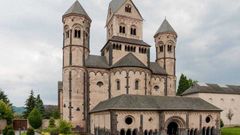
A rose or wheel window of the Romanesque Church was often placed over the. |
|
|
|
RAYONNANT |
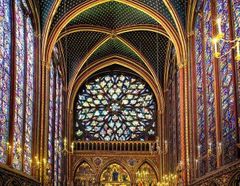
A period in Gothic Architecture in France characterized by circular windows with wheel tracery. |
|
|
|
PLOUGH |
Projecting ornament at the intersection of the ribs of ceilings, whether vaulted or flat. |
|
|

CAMBER |
A slight convex curvature built into truss or beam to compensate for any anticipated deflection so that it will have no sag when under load. |
|
|
|
RUSTICATION |

A method of forming stonework with roughened surfaces and recessed joints, principally employed in Renaissance building. |
|
|
|
JOSEPH PAXTON |
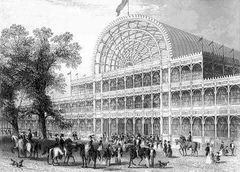
Designer of the Crystal Palace, London. |
|
|
|
JAMES HOBAN |

Architect of the White House, D.C. |
|
|
|
CARLOS BARETTO |
Second Filipino registered architect after the well-known Tomas Mapua. |
|
|
|
MUEZZIN |

Man who leads the congregation at a prayer. |
|
|
|
ISLAMIC |
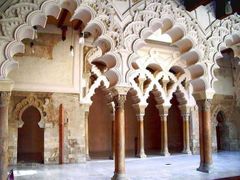
Architectural style characterized by Friezes and Crestings. |
|
|
|
QIBLA |

Sacred enclosure found at walls of Damascus great mosque. |
|
|
|
SHAH-JAHAN |

Erected to the memory of his favorite wife Mumtaz Mahal, it was the culminating work in the life of the emperor. |
|
|
|
CLUNIAC |

In Romanesque arch're a period where an order founded by St. Bruno in 1806 is notably severe and adorned. |
|
|
|
SOBER & DIGNIFIED |

General characteristic of the Romanesque empire was. |
|
|
|
SIXTITE |
Vaulting compartment into six parts known as. |
|
|
|
PILASTER STRIPS |

A rectangular feature in the shape of a pillar, but projecting only about one sixth of its breath from wall. |
|
|
|
CAMPANILE |

Is a circular tower 16 m ( 52 ft. ) in diameter rising in 8 stories of encircling arcades. |
|
|
|
AMBROGIO |

Roughly carved of men and beasts used as support columns of projecting porches and of bishops throne. |
|
|

ALTARS |
A secluded place. |
|
|
|
CASTLE |

Secular architecture. |
|
|
|
TRANSEPT |
A circular or polygonal apse when surrounded by an ambulatory of which are chapels. |
|
|
|
TUDOR |

An architectural style which in its period is the English equivalent of the high gothic of northern France first pointed. |
|
|

MOULDINGS |
Leafed ornament. |
|
|
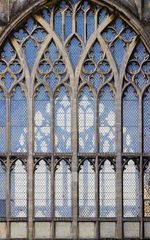
TRACERY |
Vertical tracery members dividing windows into different numbers of lights. |
|
|

PRESBYTERY |
The actual sanctuary of a church beyond the choir and occupied only by the officiating clergy. |
|
|
|
WEST MINISTER ABBEY |

Single and most important building in Britain. |
|
|

PANTRY |
A room, where food is stored in a manor house. |
|
|
|
CIMBORIO |

The screen/ ornamental work rising behind the altar. |
|
|
|
FINIAL |
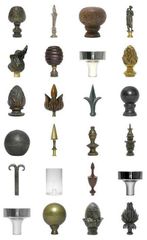
Term applied to a tower crowned by a spire. |
|
|
|
RETABLO |

A ledge or shelf behind an altar for holding vases or candles. |
|
|
|
KIBLA |

Originally the minaret of the mosque. |
|
|
|
FLORENCE CATHEDRAL |

The largest medieval cathedral and is somewhat German in character in north Italy. |
|
|
|
CRYPT |

A space entirely or partly under a building in churches generally beneath the chancel and used for burial in early times. |
|
|
|
RENAISSANCE |
A movement which begun in Italy in the 15th century created a break in the continuous revolution of European times. |
|
|
|
PALLADIAN |

In renaissance archre, which is logically staid and serene architectural style? |
|
|
|
ANTIQUARIAN |

The phase in western European renaissance archre 1750-1830, when renewed inspiration was sought from ancient Greek and roman architecture. |
|
|
|
MANNERISTS |

A term coined to describe the characteristics of the output of Italian renaissance architects of the period 1530-1600. Characterized by unconventional use of classical elements. |
|
|
|
RELIQUARY |

A light portable receptacle for sacred relics. |
|
|
|
BRUNELLESCHI |
Famous architect in Florence renaissance archre. |
Filippo Brunelleschi |
|
|
PIANO NOBLE |

The principal floor of an Italian palace, raised one floor above ground level and containing the principal social apartments. |
|
|
|
DONATO BRAMANTE |
Known architect in early renaissance. |
|
|
|
MULLION |
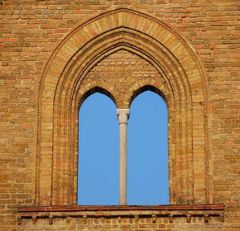
Vertical members dividing windows into different numbers of lights. |
|
|
|
TRANSOM |

Horizontal divisions or crossbars of windows. |
|
|
|
WREATH |

A twisted band, garland or chaplet, representing flowers, fruits, leaves often used in decoration. |
|
|
|
SCROLL |

An ornament consisting of a spirally wound band, either as a running ornament or as a terminal. |
|
|
|
NYMPHANEUM |
A room decorated with plants, sculpture and fountains (often decorated with nymphs) and intended for relaxation. |
|
|
|
ROCAILLE |
France generally describe rococo as. |
|
|
|
CHERUBIN |

One of the winged heavenly beings that support the throne of god or act as guardian spirits, or chubby, rosy- faced child with wings. |
|
|
|
NEWEL |

Central shaft of a circular staircase also applied to the post in which the handrail is framed. |
|
|
|
STRAPWORK |

A type of relief ornament or cresting resembling studded leather straps, arranged in geometrical and sometimes interlaced patterns; much used in the early renaissance archre in England. |
|
|
|
INTERCOLUMNATION |
Space between the columns. |
|
|
|
FRETWORK |

An ornament in classic or renaissance archre consisting of an assembly of straight lines intersecting at right angles of various patterns. Also called key pattern. |
|
|
|
PULPITUM |
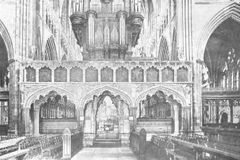
A stone gallery over the entrance to the choir of a cathedral or church. |
|
|
|
POLYCHROMY |
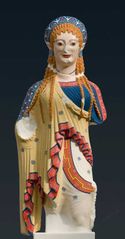
A term originally applied to the art of decorative painting in many colors, extended to the coloring of sculpture to enhance naturalism, also described to the application of variegated materials to achieve brilliant or striking effects. |
|
|
|
EXPRESSIONISM |

The selection of elements from diverse styles for architectural decorative designs,particularly during the 2nd half of the 19th century in Europe and USA. |
|
|
|
EYEBROW |

A long dormer on the slope of a roof, it has no sides, the roofing being carried in a nave line. |
|
|

SKYLIGHT |
The central rounded of a pattern or ornament, an oculus, one at the summit of a dome. |
|
|
|
REJA |

A vertical steel support cast iron was used until relatively cheap steel became available. |
|
|
|
BURMA |

Also known as Siam (before 1993) and was named, meaning "land of the free" |
|
|
|
VIHARA |

A stupa in a form of a corn cob. |
|
|
|
SHWEDAGON PAGODA |

Reflects Burma's cultural connections with China and India, built over older foundations (16th-17th century) at Rangoon. |
|
|
|
PITAKAT-TAIK |

Burma's term for monasteries. |
|
|
|
PAILOU |

Chinese monumental gateway. |
|
|
|
ALEXANDRE GUSTAV EIFFEL |
Is the most famous for the eye catching tower he constructed in Paris for the exposition universally of 1889 work of Eiffel tower. |
|
|
|
LOUIS HENRY SULLIVAN |

One of the pioneers of the modern movement in American architecture. Work auditorium building, U.S. |
|
|
|
YAMASAKI & ROTH |

Architectures of the famous Twin Tower World Trade Center. |
|
|
|
CHARLES MACKINTOSH |

Scottish architect and designer who was prominent in the arts and crafts movement in Great Britain. |
|
|
|
TOMAS MAPUA |

Received the "Patnubay ng Sining at Kalinanagan "award for the city of manila, who is the architect? |
|
|
|
FRANK GEHRY |
In 1989 he received the prtzker prize commonly referred to as "The Noble of Architecture" the loftiest recognition. It is a lifetime achievement award granted to living architect whose body of work represents a superlative contribution to the field. |
|
|
|
ERICH MENDELSOHN |

His first designs were drawings of fantastic architectural visions in steel and glass as well as costume and poster design. |
|
|
|
LOUIS KAHN |

Much of his works has been described as post modern, since he rejected the excessive abstractionism of architects such as Le Corbusier and strove instead to incorporate the valid elements of older style. |
|
|
|
ANTONIO GAUDI |
Spanish architects, one of the most creative practitioners of his art in modern times. His style is often described as a blend of neo-gothic and art nouveau, but is also has surrealist and cubist elements. |
|
|
|
BUCKMINSTER FULLER |

One of the world's 1st futurist and global thinkers. His 1927 decision to work always and only for all humanity led him to address the largest global problems of poverty,disease and homelessness. |
|
|
|
FRANCISCO MANOSA |

In his practice he explores the use of indigenous materials infused with current technological trends to bring a new dimension in designs. |
|
|
|
GUSTAVE EIFFEL |

Afterwards became deeply involved in the design and building of French railways and bridges. He worked on structures such as bridge across the Garonne River, train stations at Toulouse and again in France. |
|
|
|
FRANCISCO MANOSA |
He has actively promoted the use of native architectural forms and indigenous nationals such as bamboo and thatch, in the creation of a distinctively Filipino architecture. |
|
|
|
LUCIO COSTA |
French-born, Brazilian architect and urban planner. This famous axiom "Each one sees whatever he wishes to see" belongs to. |
|
|
|
BUCKMINSTER FULLER |

He was the architect in his time that receives his license as award at his 60's or at the age of 60 yrs. old. |
|
|
|
ROBERT ADAM |

An important Scottish architect who was particularly known for his interiors based on classical decoration. |
|
|
|
PETER BEHRENS |

He was called "Masters master" where his students are architects like Gropius, Breuer and Van de Rohe. |
|
|
|
FRANCISCO MANOSA |

Architect who leads the development of the 'Quezon Memorial Circle" in Quezon City. |
|
|
|
984 FT. |
Eiffel tower I Paris stands. |
|
|
|
BUCKMINSTER FULLER |
Starting with holes" belongs to architect. |
|
|
|
REIMS CATHEDRAL |
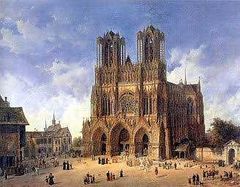
What is the name of the Cathedral in France that was designed by Jean d' Orbais. |
|
|
|
ELYSEE PALACE |

In France, It is the official residence of President of France, It was built in 1718 by Claude Mollet for Henry de la Tour d' Auvergne |
|
|
|
TOROGAN HOUSE |

In Philippine Architecture, It is considered the homeof the Sultans. Carved on the wooden posts in theniyaga, a stylized mytical snake design can be found.It is the traditional residence of the reigning Sultanof Maranaw people and his family. |
|
|
|
ALEXANDER |
The first Frankish king who became roman emperor, was crowned in 800 at Rome by the pope, and ruled over the franks, which included central Germany and northern France. |
|
|
|
HELM ROOF |

Type of roof in which 4 faces rest diagonally between the gables and converge at the top. |
|
|
|
ALOCABACA, PORTUGAL |

Finest or Romanesque castles in Spain is at ____. |
|
|
|
FORTRESS |

Sited and designed to secure the routes from coastal ports to Jerusalem. |
|
|
|
FORTIFICATION |

A civil settlement under the protection of a castle. |
|
|
|
MACHICOLATIONS |

A projecting wall or parapet allowing floor openings, through w/c molten lead, pitch, stones were dropped only on an enemy below. |
|
|
|
BATTLEMENT |

A parapet having a series of indentions or embrasures, between which are raised portions known as merlons. |
|
|
|
MERLONS |

The upstanding part of an embattled parapet, between two crenels/ embrasure openings. |
|
|

BAILEY |
A squared timber used in bldg. construction or a low ridge of earth that marks a boundary line. |
|
|
|
STAVE CHURCH |

A Scandinavian wooden church with vertical planks forming the walls. |
|
|
|
DOMESTIC |

Architecture was marked by copy roofs which frequently had more storey than the walls, and were provided with dormer windows to make through current of air for their use as a drying ground for the large monthly wash. |
|
|
|
CROCKET |

A projection block or spur of stone carried with foliage to decorate the raking lines formed by angles of spires and canopies. |
|
|

BUTTRESS |
An arch starting from a detached pier and abutting against a wall to take the thrust of the vaulting. |
|
|
|
MIES VAN DE ROHE |

He paid great attention to the detailing of the structure, which he attributed to his father's teachings about craftsmanship. |
|
|
|
OSCAR NIEMEYER |

His contributions where the advocacy of the idea of planning rooms by volume. |
|
|
|
PIER LUIGI NERVI |

His solutions to building problem were always direct, transmitting to the ground by the shortest path the stresses developed within the structures. |
|
|
|
LUCIO COSTA |
Father of modern architectural movement in Brazil. |
|
|
|
KENZO TANGE |
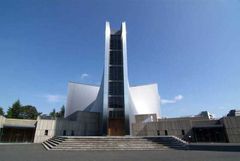
A city is subjected to growth, delay and rebuilt. |
|
|

HIEROGLYPHICS |
For Egyptian Architecture design, due to excessive sunshine, there was no need for windows, themassive unbroken walls provided the surface for________________. |
|
|

EPIDAURUS THEATER |
In Greek Architecture, The __________ designed (c.350 BC) by Polyclitus. It is among the largest and best preserved ancient theaters in Greece. The circular construction and the pitch ofthe seats, where held close to 14,000 spectators,permit nearly perfect acoustics. |
|
|

COLOSSEUM |
In Roman Architecture, It was built AD 72-82 inRome Italy, It is the largest Roman Amphitheater, Afour storey, elliptical structure that seated about50,000 spectators. The exterior façade wasembellished with super imposed Doric, ionic andCorinthian columns. |
|
|
|
TRAJANS FORUM |
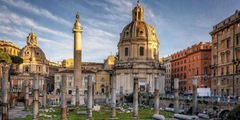
In Roman Architecture, It was built AD 112, It wasdesigned by Apollodorous of Damascus for Emperor Trajan, it is often considered the most magnificent and architecturally most pleasing. |
|
|
|
AGRIPPA |

In Roman Architecture, The Pantheon (AD C118-28),A monument of imperial Rome, revived the use of brick and concrete in temple architecture. It is symmetry is enchanced by its hemispherical dome,Who is the architect of this historical monument?(he is the son in law of Augustus.) |
|
|
|
ROBERT MILLS |
The Washington D.C. monument. The tapering shaftcontained in a Greek style temple, the obelisk is the only remnant of the original blueprint that remains. It was designed in the year 1812 by the American Architect, What is the name of this Architect? |
|
|
|
LUDWIG MIES VAN DER ROHE |
Who said "Less is more"? |
|
|
|
MARCEL BREUER |
The ironic term "Maximum Simplicity" is attributed to _________? |
|
|
|
RICHARD JOSEF NEUTRA |
Who said "A house is like a flower pot"? |
|
|
|
ROBERT VENTURI |
Less is a bore. |
|
|
|
CAESAR HOMER CONCIO |
Who is the Filipino architect who stated that "the structure must be well oriented"? |
|
|
|
TOMAS MAPUA |
Who was the first Filipino architect? |
|
|
|
History, Geography, Geology, Climate Society, Religion |
Factors affecting the styles of architecture (6). |
|
|

STONE AGE |
Earliest known period of human culture, preceding the Bronze Age and the Iron Age and characterized bu the use of stone implements and weapons. |
|
|
|
KERLOAS MENHIR |

The tallest menhir in Brittany at 9.5m high. |
|
|
|
CHURCH BUILDINGS |
The most important of the distinctive characteristics of mature Spanish Romanesque architecture. |
|
|
|
PORTUGAL |
Is well endowed with medieval military achre and grand castles are particularly numerous in castle. |
|
|
|
RICHARD MEIER |
One of his stylish choice which are circles and squares were used in his design solutions. |
|

